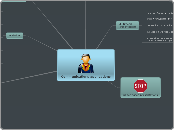
Communications applications
Multimedia Presentations
the use of sound and animation/video effects
interactive/hyperlinks built into the presentation
the fact that it is more likely to hold the audience's attention
the need to have special equipment, which can be expensive
access within the presentation, if the user wishes to access files from websites or up-to-date information

paper based presentations
Music production
Disabled people do not have to go to the venue to see the presentation.
It is possible to print it our in Braille for the benefit of blind people.
The recipient can read the presentation at any time they want
The recipients have a permanent copy, which they can refer to at any time they want.
The presentation needs to be distributed in some way
There are ne special effects (sound, video, animation)
There are printing costs (paper, ink, etc)
Cartoon animations
Websites
The ability to add sound/video/animation
Links to other wevsites/hyperlinks
The use of hot spots
Buttons to navigate
Hit counters to see who has visited the website
Websites can be hacked into viruses
Need for a computer
Lack of portability
Need to maintain the website
Flyers and posters
A word processor or DTP application is opened
The user creates frames, boxes and text boxes
If necessary, photos are taken, using a camera.
The images are uploaded from the camera, loaded from a cd/dvd. scanned from hard-copy photos or downloaded from the internet.
The photos are saved to a file
The photos are imported or copied and pasted into the document
The photos are edited and text typed in or imported from a file and then put the required style.
